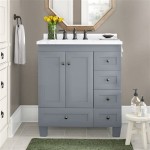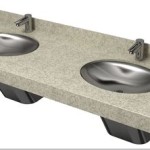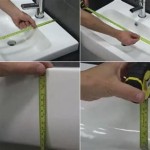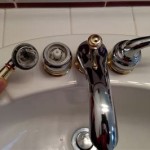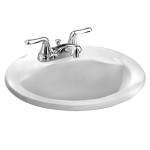Smelly Drain Pipes In Bathroom: Causes, Solutions, and Prevention
Bathroom drain pipes, while essential for waste removal, can sometimes emit unpleasant odors, transforming a normally sanitary space into an unwelcome environment. Identifying the source of these smells and implementing effective solutions is crucial for maintaining a clean and hygienic bathroom. Understanding the common causes of these odors is the first step toward resolving the problem effectively.
Biofilm Buildup and Bacterial Growth
One of the primary causes of smelly drain pipes is the accumulation of biofilm. Biofilm is a complex community of various microorganisms, including bacteria, fungi, and protozoa, encased in a self-produced matrix of extracellular polymeric substances (EPS). This slimy layer adheres to the inner walls of drain pipes, providing a breeding ground for odor-producing bacteria.
Bathrooms provide an ideal environment for biofilm formation due to the consistent presence of moisture, organic matter (such as soap scum, hair, and skin cells), and relatively warm temperatures. As organic matter flows down the drain, it becomes trapped within the biofilm, serving as a food source for the microorganisms. The bacteria within the biofilm then break down this organic material, releasing volatile compounds, including sulfides, ammonia, and other gases, which are responsible for the foul odors.
Over time, the accumulation of biofilm can significantly reduce the flow capacity of the drain, further exacerbating the problem. The restricted flow allows more organic matter to collect, leading to an increase in bacterial activity and a stronger odor. In this situation, simply flushing the drain with water is usually insufficient to remove the biofilm, requiring more aggressive cleaning methods.
Proper ventilation can help minimize the moisture levels within the bathroom, thereby reducing the rate of biofilm formation. Regular cleaning of drains with enzymatic cleaners can break down the organic matter and prevent the buildup of biofilm. Harsh chemical drain cleaners, while seemingly effective in the short term, can damage the pipes and contribute to long-term problems. These chemicals can also kill off beneficial bacteria that naturally break down organic waste, allowing more harmful odor-producing bacteria to thrive.
Preventative measures such as using drain screens to catch hair and other debris can reduce the amount of organic matter entering the drain system, thereby minimizing the food source for biofilm growth. It's also beneficial to occasionally flush the drain with hot water to help dislodge loose debris and reduce the accumulation of organic material.
Dry P-Traps and Sewer Gas Leakage
Another common cause of bathroom drain odors is a dry P-trap. The P-trap is a U-shaped pipe located beneath the sink or bathtub drain. Its primary function is to trap water, creating a seal that prevents sewer gases from escaping into the bathroom. When the water in the P-trap evaporates, this seal is broken, allowing sewer gases to rise through the drain and into the living space.
The most common reason for a dry P-trap is infrequent use of the fixture. If a sink or bathtub is not used regularly, the water in the P-trap will gradually evaporate. This is particularly common in guest bathrooms or infrequently used sinks. Leaks in the drain line before the P-trap can also cause the water level to drop, leading to a loss of the seal.
Sewer gases are a complex mixture of different gases, including methane, hydrogen sulfide, ammonia, and carbon dioxide, among others. Hydrogen sulfide is particularly noticeable due to its characteristic rotten egg smell. Exposure to high concentrations of sewer gases can be harmful and can cause symptoms such as headaches, nausea, and dizziness. In extreme cases, high concentrations of methane can pose an explosion risk.
The solution for a dry P-trap is relatively simple: pour water down the drain. This will refill the P-trap and re-establish the water seal. For infrequently used fixtures, it's recommended to pour a cup of water down the drain every few weeks to prevent the P-trap from drying out. If the problem persists despite regular water replenishment, it may indicate a leak in the drain line, which requires professional attention.
In addition to ensuring that the P-trap is properly filled, it's important to check for any signs of leaks around the drain connections. Leaks can not only lead to water damage but also contribute to the evaporation of water in the P-trap, exacerbating the odor problem. Tightening loose connections or replacing worn-out seals can help prevent leaks and maintain the integrity of the P-trap.
Ventilation Issues and Air Pressure Imbalances
Proper ventilation is crucial for maintaining a sanitary and odor-free bathroom. Ventilation systems help to remove moisture, humidity, and airborne pollutants, which can contribute to the growth of mold, mildew, and odor-producing bacteria. Properly functioning vent stacks are essential to preventing negative pressure in drain lines.
Plumbing systems rely on vent pipes to equalize air pressure within the drain lines. These vent pipes typically extend from the drain system up through the roof, allowing air to enter and exit the system. This prevents vacuums from forming when water drains, which could siphon water from the P-traps and allow sewer gases to escape into the building. If the vent pipes become blocked or obstructed, this can lead to negative pressure within the drain lines.
Common causes of vent pipe blockages include debris such as leaves, bird nests, and dead animals. Snow and ice accumulation can also obstruct vent pipes, particularly in colder climates. When the vent pipes are blocked, the negative pressure in the drain lines can pull water out of the P-traps, breaking the seal and allowing sewer gases to enter the bathroom.
Symptoms of a blocked vent pipe include gurgling sounds from the drains, slow drainage, and the presence of sewer odors in the bathroom. Identifying and clearing vent pipe blockages is essential for restoring proper ventilation and preventing the escape of sewer gases. This may involve inspecting the vent pipes on the roof, removing any visible debris, and potentially using a plumbing snake or other tool to dislodge more stubborn obstructions.
In some cases, inadequate ventilation may be due to a poorly designed or undersized ventilation system. In older homes, the ventilation system may not be sufficient to handle the increased demands of modern plumbing fixtures. Adding additional vents or upgrading the existing ventilation system may be necessary to ensure adequate airflow and prevent odor problems. The use of an exhaust fan during and after showers or baths can also help to remove excess moisture and prevent the buildup of odor-producing bacteria.
Furthermore, it is important to consider the potential for cross-connections between the drain and water supply lines. Cross-connections can occur when there is a pathway for contaminated water to flow back into the potable water supply. This can introduce bacteria and other contaminants into the water system, leading to foul odors and potential health risks. Preventing cross-connections through the installation of backflow preventers and regular inspections of the plumbing system is essential for maintaining water quality and preventing odor problems.
Regular maintenance of the drain system is ultimately crucial for preventing smelly drain pipes in the bathroom. This includes regularly cleaning drains with appropriate cleaning agents, checking for leaks and making necessary repairs, ensuring proper ventilation, and preventing the accumulation of hair and debris. Addressing these issues proactively can help to maintain a clean, hygienic, and odor-free bathroom environment.

How To Clean A Stinky Sink Drain By Home Repair Tutor

How To Clean Stinky Drains Liquid Plumr

What Causes Bathroom Drains To Smell
:max_bytes(150000):strip_icc()/__opt__aboutcom__coeus__resources__content_migration__mnn__images__2018__08__sink_drain-351af8e441034f319fe07f00c091d8b6.jpg?strip=all)
How To Clean A Smelly Drain Naturally

Prevent Drain Smells Deodorize Your Drains
Why Is There A Sewage Smell In Your Bathroom Howstuffworks

Sewer Smell In Bathroom Solved Bob Vila

How To Clean Stinky Drains Liquid Plumr

Five Reasons Your Bathroom Smells Like A Sewer The Plumbette

My Bathroom Smells Like A Sewer What Causes That And How Do You Fix It Kitchen Infinity
Related Posts
